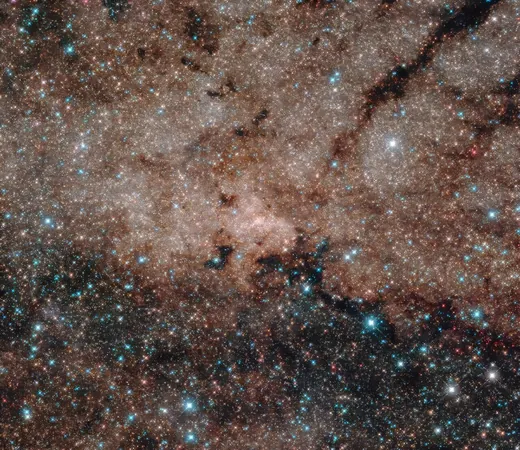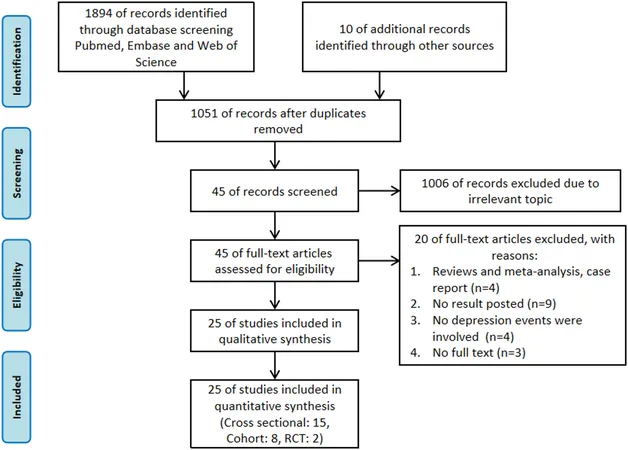
Is Your Body Made of Cosmic Junk? Discover How Carbon Travels Across the Universe!
2025-01-03
Author: Mei
Life intertwined with carbon
Life as we know it on Earth is deeply intertwined with carbon, a fundamental building block of all living organisms. But did you know that the carbon in your body has an extraordinary cosmic history? Emerging research reveals that this essential element, along with others like oxygen and iron, was born in the nuclear furnaces of stars and has journeyed across the galaxy before becoming part of our planet!
Discovery of cosmic recycling
Recent collaborative research between scientists from the U.S. and Canada has uncovered fascinating insights into how carbon, along with other elements forged in stars, escapes into space and then returns to fuel the creation of new worlds. The study focuses on a vast phenomenon known as the circumgalactic medium (CGM)—a sort of cosmic 'conveyor belt' that plays a crucial role in the recycling process of matter in the universe.
The cosmic conveyor belt
Imagine the CGM as a massive train station where material is constantly being pushed out of galaxies due to massive supernovae—stars exploding at the end of their life cycle. These explosive events send heavy elements like carbon drifting into intergalactic space. As gravity works in tandem with other forces, some of these materials eventually find their way back into galaxies, where new stars and planets are formed. 'The heavy elements that stars make get pushed out of their host galaxy and into the circumgalactic medium, where they can eventually get pulled back in,' explains Samantha Garza, a doctoral student at the University of Washington and lead author of the study published in The Astrophysical Journal Letters.
Findings of the study
Garza and her colleagues have discovered not only hot gases enriched in oxygen, but also cooler carbon-rich materials populating the CGM of star-forming galaxies. The ramifications of these findings are monumental; they suggest that the carbon that makes up our very bodies may have spent eons outside the galaxy before rejoining the cosmic cycle of birth and rebirth in stars and planets.
Implications for galaxy evolution
One of the study's co-authors, Jessica Werk, emphasizes the implications of this research for understanding galaxy evolution and the carbon reservoirs available for new star formation. 'The same carbon in our bodies most likely spent a significant amount of time outside of the galaxy,' Werk remarked, provoking thought about our own cosmic origins.
Groundbreaking methodology
The methodology employed for this research was groundbreaking. Utilizing the Cosmic Origins Spectrograph aboard the Hubble Space Telescope, the scientists measured how the light from nine distant quasars—intensely luminous objects powered by black holes—was affected by carbon and other elements in the CGM surrounding 11 star-forming galaxies. Their measurements revealed astonishing results, showing carbon extending nearly 400,000 light-years into intergalactic space, which is a remarkable four times the diameter of our Milky Way galaxy!
Future implications
This research paves the way for further exploration of the circumgalactic medium and its critical role in the life cycle of galaxies. By studying how these cosmic materials circulate, scientists aim to uncover why some galaxies eventually become 'stellar deserts' and cease star formation.
Conclusion - the cosmic connection
Can you imagine? You're not just a product of Earth—you're made from the remnants of stars that exploded eons ago! As astronomers continue to unlock the secrets of our universe, we inch closer to understanding the profound connections between our own existence and the cosmic dance of formation and destruction.
Stay Tuned
Stay tuned as we dive deeper into the mysteries of the universe, challenging everything we thought we knew about life and the cosmos!



 Brasil (PT)
Brasil (PT)
 Canada (EN)
Canada (EN)
 Chile (ES)
Chile (ES)
 Česko (CS)
Česko (CS)
 대한민국 (KO)
대한민국 (KO)
 España (ES)
España (ES)
 France (FR)
France (FR)
 Hong Kong (EN)
Hong Kong (EN)
 Italia (IT)
Italia (IT)
 日本 (JA)
日本 (JA)
 Magyarország (HU)
Magyarország (HU)
 Norge (NO)
Norge (NO)
 Polska (PL)
Polska (PL)
 Schweiz (DE)
Schweiz (DE)
 Singapore (EN)
Singapore (EN)
 Sverige (SV)
Sverige (SV)
 Suomi (FI)
Suomi (FI)
 Türkiye (TR)
Türkiye (TR)
 الإمارات العربية المتحدة (AR)
الإمارات العربية المتحدة (AR)